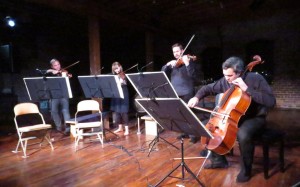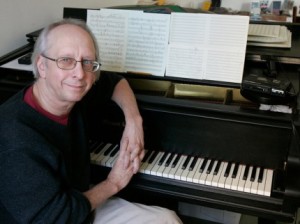"The American Composers Forum is pleased to co-present “Behind the Wallpaper” by composer Alex Temple, performed by The Spektral Quartet and Julia Holter on February 23, 2015 as part of the Liquid Music Series in the Twin Cities. Chris Campbell, the Operations Director of the label of the American Composers Forum, innova Recordings, recently spoke with Doyle Armbrust from Spektral and asked him to share his thoughts about the mysterious and lyrical “Behind the Wallpaper” and a few other topics.
How did Spektral’s involvement in “Behind the Wallpaper” come about, and is there anything to keep in mind or listen for when we hear it February 23?
Behind the Wallpaper came about like the vast majority of our commissions do...we were keen to work with a specific composer. Alex Temple, who is based in Chicago, has an uncanny knack for uncovering the oblique, the humorous, and even the sublime through the idiom of pop musics. While she's hip to Lachenmann and Ligeti, etc etc etc, Alex doesn't rely on a bevy of extended techniques to create anticipation and the feeling of something new. As a performer, it's a wondrous thing, to see a score that doesn't look like the blueprint for the next particle accelerator, and yet has the audience (and the players) buzzing long after the show is over. That isn't to say we don't thrive on those kinds of pieces. It's just that Alex has found a peculiar, devastatingly honest way of delivering music."
To read the whole article, click here












